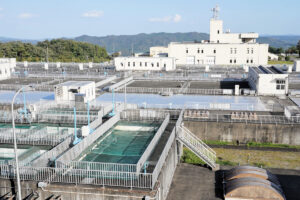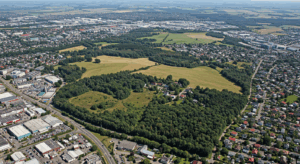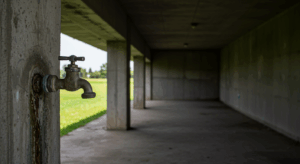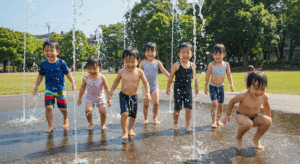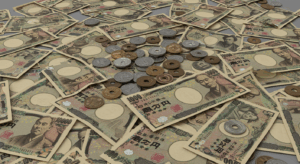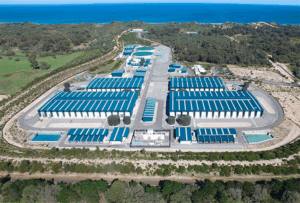In recent years, large-scale disasters caused by earthquakes and extreme weather events have occurred frequently. Among them, disasters in major urban areas are said to be particularly devastating due to their scale and far-reaching impact. We must not avert our eyes from this reality and must prepare for the inevitable.
What would happen if Tokyo’s 23 wards — a region requiring 7,000 tons of food per day — suddenly lost its urban functionality? Our daily lives are supported by countless people and logistics systems that often go unseen.
1. Cities Where Victims Must Also Be First Responders
In densely populated metropolitan areas with concentrated functions, a disaster means that not only civilians waiting for aid become victims, but also administrative staff, healthcare workers, and logistics personnel — those who are supposed to provide assistance — are affected simultaneously.
For instance, in the event of a major disaster in a city with a population of 1 million, it is estimated that around 80% of Tokyo metropolitan government staff would themselves be affected, according to Tokyo’s Disaster Prevention Council. Firefighters, medical professionals, and logistics workers who stand on the frontlines of emergency response are also expected to face the same fate, significantly impairing their ability to respond.
Unlike regional disasters where external support can be awaited, it is extremely difficult to respond to the sheer number of victims in a major city solely with outside aid. To maintain urban functionality and protect lives, it is essential for each of us to adopt a mindset of “self-sufficiency” based on individual preparedness (“self-help”) and mutual support within our communities (“mutual help”).
2. The Three “Queues” That Plague Major Cities
One of the most pressing concerns during disasters in major cities is the emergence of long “queues” for goods and services.
Water trucks: Lines can stretch from several hundred meters to 1 km per truck; hours-long waits and drinking water shortages.
Delivery trucks: Tens of kilometers of traffic jams around cities; delays and shortages lasting days to weeks.
Medical beds: Dozens to hundreds of injured people waiting at hospital entrances and examination rooms; delayed treatment, worsening conditions, or even failure to save lives.
These queues not only threaten the health and lives of victims by delaying critical supplies and care, but they also risk halting the city’s entire functionality. Even when demand is overwhelming, the lack of timely supply is what makes urban disasters uniquely catastrophic.
3. The Population-Supply Paradox
Disasters in large cities face the paradox of “population” versus “supply volume.” For example, Tokyo’s 23 wards alone require about 7,000 tons of food per day — equivalent to approximately 14,000 large trucks worth of supplies. Under normal conditions, logistics systems provide this without issue.
But in times of disaster? Disrupted roads, traffic restrictions, and the shutdown of logistics networks make it extremely difficult to transport such massive quantities into the city. Even if relief supplies arrive, sorting and distributing them requires significant manpower and time — resources which are severely limited during emergencies.
It is crucial to understand this “physical limit of relief supplies, seen through numbers”. We must recognize that necessary supplies may not be immediately available during a disaster and proactively stock up on essential items ourselves.
4. Traffic Restrictions and Compound Infrastructure Failures
During a disaster, widespread traffic restrictions are imposed in major cities. While necessary to ensure access for emergency vehicles and to prevent secondary disasters, these restrictions also severely hinder the movement of general vehicles, disrupting logistics and human mobility.
Even more critical is the potential for simultaneous failures in essential lifelines such as water, electricity, and gas. Ground liquefaction or building collapses due to earthquakes can trigger widespread disruptions across these services all at once.
One of the greatest fears in a major earthquake scenario in urban areas is “fire.”
During the Great Hanshin-Awaji Earthquake, 285 separate fires broke out simultaneously. The Noto Peninsula Earthquake also saw large-scale fires across wide areas, causing significant damage.
In conditions where water supplies are cut off, initial firefighting becomes extremely difficult. This raises the risk of widespread fire damage that could potentially consume entire city districts. The combination of traffic restrictions and compound infrastructure failures delays emergency responses, further exacerbating the scale of damage.
5. Breakdown of Order and Security Risks
In the chaos of a large-scale disaster, the breakdown of social order and deterioration of public safety become real risks. Past disasters have shown instances of misinformation spreading, panic buying, and discriminatory behavior based on unverified rumors.
To prevent such outcomes, accurate information literacy is critically important. We must calmly assess information from public agencies, avoid falling for falsehoods, and foster an inclusive spirit of mutual aid among people from diverse backgrounds. This mindset is key to enhancing urban resilience.
6. Five Actions We Can Take
What can each of us do to reduce the devastation caused by disasters in major cities? Here are five actionable steps we recommend:
- “Decide: Multiple Evacuation Options”: Prepare in advance by identifying multiple evacuation locations and routes, such as the homes of relatives or friends, or local designated shelters.
- “Create: A Pre-Disaster Supply-Sharing Community”: Discuss and establish a system for sharing emergency supplies with family and neighbors wherever possible.
- “Prepare: Alternative Infrastructure (Power, Water)”: Equip your home with items like portable power supplies and water purification filters in case lifelines are cut. (Reference cost: approx. ¥150,000 for power, ¥5,000 for filters)
- “Plan: A Timeline That Includes Security Risks”: When planning for disaster scenarios and recovery timelines, consider the potential deterioration of public safety and incorporate it into your preparedness strategy.
- “Train: Information Retrieval Practice”: In times of crisis, information is scattered. Train yourself to quickly obtain accurate information via radios, disaster alert apps, and trusted social media sources.
Start with just one action tonight. (Estimated time: 5 minutes)
7. Conclusion & Preview
Disasters in major cities tend to become especially tragic due to their unique circumstances. However, we have the power to reduce their severity through individual awareness and proactive action.
> Next: Understanding the “Fire Risk” That Can Engulf a City

